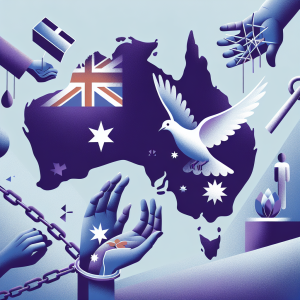#MeToo
The historical voyage of brides across Europe is characterized by a rich and intricate mixture of cultural traditions, societal expectations, and individual narratives that span from moments of happiness to deeply concerning instances. Central to this historic exploration are the evolution of customs like dowries and the pervasive issue of domestic violence. These subjects not only provide insight into how brides were previously treated but also mirror wider gender disparities and the fight for women’s rights. Investigating these topics allows us to understand the experiences of women through European history and the ongoing battle for fairness and dignity.
Dowries in Marriage: A Beneficial yet Problematic Tradition
The practice of dowries, which involves the bride’s family giving money or assets to the groom’s family at marriage, has a long history that spans several centuries. While this custom was not exclusive to Europe, it played a critical role in marriage practices within various European societies. While dowries were ostensibly intended to secure a woman’s economic future, they also contributed to treating women as property to be traded.
The implications of a dowry could significantly influence a woman’s prospects in marriage, with larger dowries often leading to more favorable matrimonial matches. However, the responsibility of providing a dowry could impose financial hardship on the bride’s family. Additionally, conflicts over the terms or amount of a dowry could escalate to violence or mistreatment.
Examining Domestic Abuse: From Romantic Pursuits to Coercion
Progressing through history, the issue of domestic abuse becomes increasingly apparent. This form of abuse, manifesting in various ways, has been a part of societies for ages, and brides in European history were not immune. The way women were treated within marriage often mirrored societal attitudes towards gender roles and the expectation of female submission.
Through historical documents and literary texts, we get a glimpse into the lived realities of these women, which include coercion, physical harm, and manipulation. For numerous brides, matrimony was less about partnership and more about the transfer of control from father to husband. In such environments, domestic violence was often normalized, leaving women with limited options for seeking help or justice.
Reflecting on the words of historical figures like English writer Mary Wollstonecraft in the 18th century, who stated, “I do not wish them [women] to have power over men; but over themselves,” highlights the intertwined nature of domestic violence and the imbalance of power in marriage.
Advocacy and the Fight Against Inequality
The push for the rights and respect of brides and women throughout history has been met with voices that oppose oppressive societal norms. These calls for reform, stretching from the distant past into the present, demonstrate the fortitude and bravery of those who fought against prevailing attitudes.
Envisioning a quote from modern human rights activist Nada Al-Ahdal, “The weight of tradition is formidable, yet our united resolve to shatter these bounds is more formidable. We must bear in mind that each woman rescued from mistreatment, every legislative advance toward equality, represents a victory over centuries of oppression.” @nadalahdal
This imagined quote echoes the historical and ongoing efforts to combat the ill treatment of brides and women in Europe and elsewhere, stressing the necessity of both recognizing and actively addressing these issues for systemic transformation.
Reflecting on History for a Better Future
Reviewing European history reveals the progression of brides from being viewed as commodities through dowry transactions to victims of domestic abuse, and eventually to champions of their own rights. This transformation mirrors larger societal changes in attitudes towards women and marriage, influenced by shifts in economic factors, legal amendments, and the relentless pursuit of rights by women’s advocates.
Although significant advancements have been achieved, the remnants of historical wrongs remind us of the continuing need to advocate for the fair treatment of brides—and all women—to be characterized by respect, equality, and freedom from violence. Moving forward, we are inspired by the legacy of those who have fought for justice and equality, standing on their achievements to further the cause for a more equitable and just society.
In summarizing, the historical mistreatment of brides in Europe, from the dowry burdens to the shadows of domestic abuse, highlights the formidable challenges women have faced over time. Nevertheless, it also shines a light on the potential for change and the influence of collective efforts in overturning established norms. By looking back at our history and advocating for a future where everyone’s rights and dignity are respected, we pay tribute to the legacy of equality fighters and lay the groundwork for future generations.
#NadaFoundation
#domestic_violence
#Nada_Foundation
#NadaAlahdal
#Dowries #Domestic #Abuse #Tracing #Troubling #Treatment #Brides #European #History
from-dowries-to-domestic-abuse-tracing-the-troubling-treatment-of-brides-throughout-european-history


















